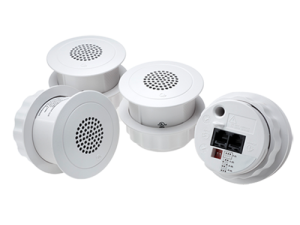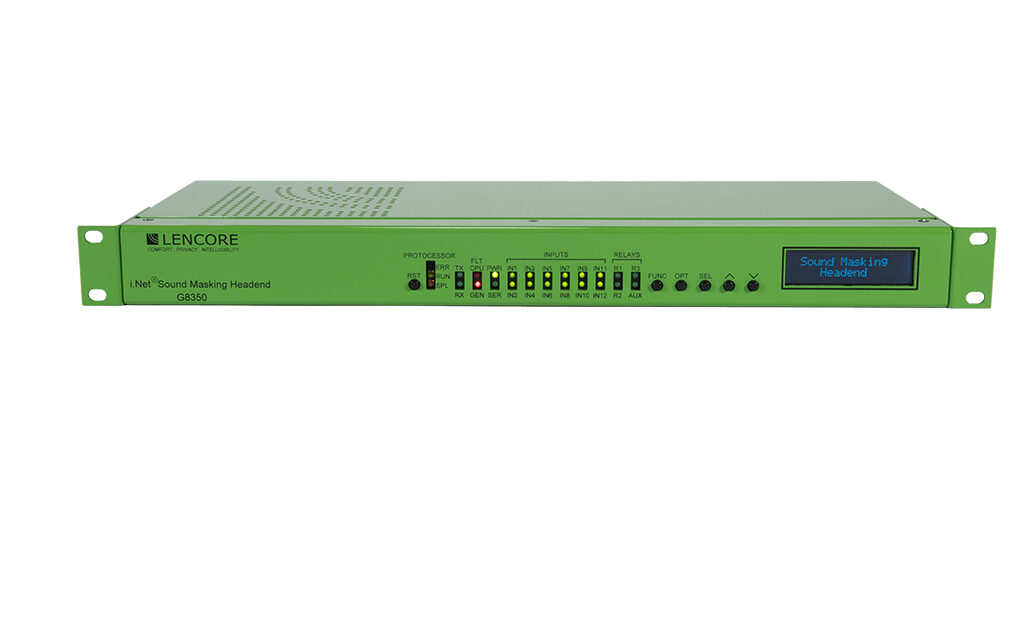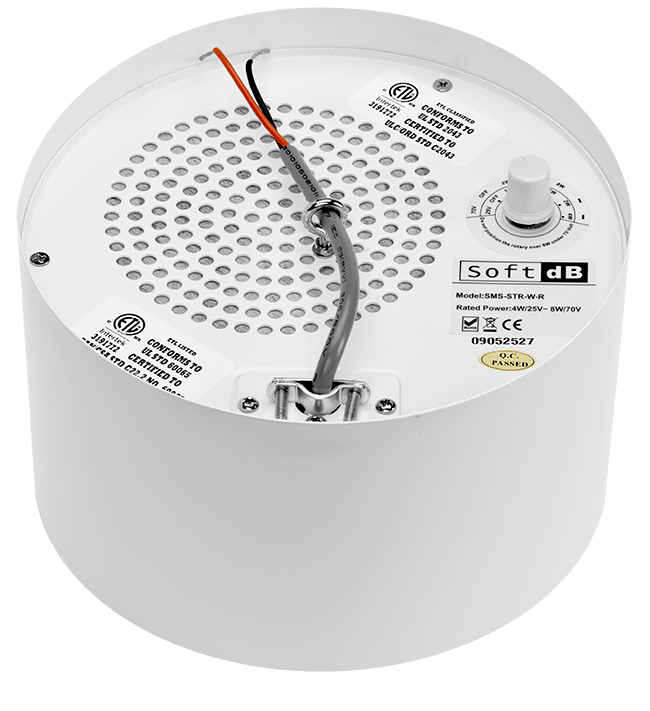In open office environments, noise isn’t just a nuisance—it can be a major productivity barrier. Sound masking systems are rapidly emerging as the go-to solution for businesses looking to create more focused, private, and comfortable workplaces. At Ford AV, our mission is to combine cutting-edge technology with tailored design to help businesses thrive in an acoustically optimized environment.
What Is Sound Masking?
Sound masking is the practice of adding a controlled, ambient background sound to an environment. Sound masking is engineered to blend seamlessly with existing ambient noise. It targets specific frequencies—usually between 2,000 and 8,000 Hz—to obscure distracting conversations without being disruptive itself. This “acoustic curtain” makes it easier for employees to maintain privacy and focus while reducing the chances of confidential information being overheard.
Unlike traditional white noise, which can be harsh and hissy, the noise used for sound masking is carefully tuned. It:
- Targets the frequencies of human speech to reduce its intelligibility, ensuring that conversations in open workspaces are less distracting.
- Rolls off in the higher frequencies and excludes low bass frequencies, creating a more natural and less intrusive background sound.
How Sound Masking Works
Sound masking systems generate a spectrum of sound that is carefully calibrated to the environment’s unique noise profile. Key technical elements include frequency calibration, volume balancing, and zoning and integration. Frequency calibration ensures that the system emits sound in a specific frequency band tailored to effectively cover unwanted background chatter while still preserving the clarity of essential sounds. This precise tuning means that the masking sound targets the same frequencies as human speech, reducing intelligibility at a distance without compromising the overall audio quality of the space.
Direct Field Sound Masking
Direct field sound masking systems are typically installed like traditional ceiling speakers that point downward into the workspace. In these systems, the sound masking noise is delivered directly into the room. Because they are positioned in the immediate vicinity of the listeners, direct field systems require careful volume balancing. They are designed so that the masking sound slightly exceeds the level of ambient noise, ensuring that no single noise source—such as a conversation—dominates the acoustic environment. However, the direct nature of these speakers can sometimes create hotspots, making it necessary to use multiple channels or emitters to achieve a uniformly distributed sound field. Zoning allows different areas—such as open offices, cubicles, or small meeting spaces—to be treated individually for optimal performance.
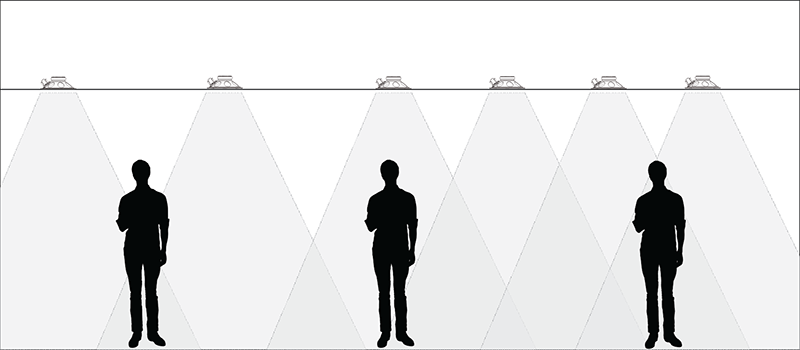
Indirect Field Sound Masking
Indirect field sound masking systems are installed above the ceiling grid, where the speakers direct sound upward into the plenum space. The sound then reflects off the ceiling and disperses evenly throughout the room below. This method benefits from a more uniform sound distribution with fewer speakers required, and it typically produces a more consistent acoustic environment across larger areas. The integration of these systems with networked controls allows for precise adjustments in different zones, ensuring that each part of the office, from private workstations to open collaborative areas, receives the optimal masking level.
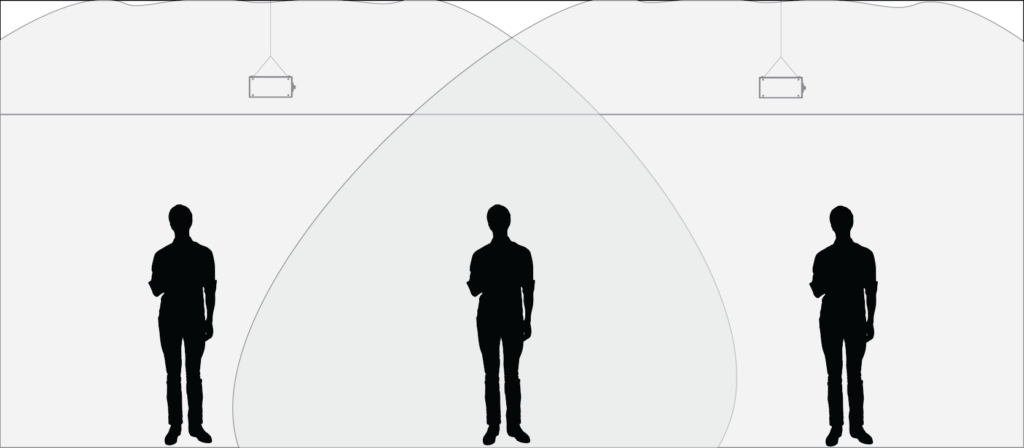
By strategically masking speech and other distractions using both direct and indirect field methods, businesses can enjoy a more controlled and harmonious sound environment that enhances privacy and boosts productivity.
Technical Insights & Best Practices
Avoiding Interference
For direct field systems, using multiple channels and carefully following blueprints prevents phase interference, ensuring that there are no noticeable “dead spots” or hotspots.
Choosing the Right Noise
Unlike white noise or pink noise, the noise used in sound masking is specifically engineered. It “rolls off” in the higher frequencies and excludes low bass, resulting in a sound that is less noticeable and more comfortable.
Proper Calibration
The system must be tuned so that the masking noise is just slightly louder than normal conversation levels. This subtle balance ensures that the noise is effective without becoming distracting itself.
Integration with AV Systems
A modern sound masking system should integrate seamlessly with your existing audio-visual infrastructure, enabling centralized control and tailored zoning for different areas of the office.
The Business Benefits

Improved Privacy and Confidentiality
Sound masking offers a layer of privacy that is essential in today’s collaborative workspaces. By reducing the intelligibility of speech, sensitive conversations are less likely to be overheard, which is particularly important in industries dealing with confidential or proprietary information.
Elevated Employee Satisfaction
When noise levels are controlled, the overall work environment improves. This can lead to higher employee satisfaction, lower stress levels, and ultimately, a boost in morale and performance. A quieter, more controlled environment also minimizes noise-related complaints, contributing to a more harmonious workplace.
Enhanced Productivity and Focus
Research shows that a well-implemented sound masking system can significantly reduce distractions in open-plan offices. Employees benefit from an environment that minimizes the cognitive load of filtering out background chatter, leading to better concentration and improved overall productivity.
Scalability and Flexibility
Whether retrofitting an existing building or designing a new workspace, sound masking systems can be scaled to suit a variety of spaces—from small offices to large corporate campuses. Their flexible design ensures that every area benefits from optimized acoustics, regardless of layout or existing architectural challenges.
The Importance of Sound Masking for Compliance
Beyond productivity and comfort, sound masking plays a crucial role in regulatory compliance:
- HIPAA Requirements: Employers in the healthcare sector—and increasingly in other industries—are mandated to provide privacy for sensitive information.
- LEED Certification: Sound masking contributes to the speech privacy component of LEED Building Certification, reinforcing a building’s sustainability and occupant comfort credentials.
Technical Considerations for Implementation
Implementing a sound masking system involves several technical considerations to ensure optimal performance:
- Acoustic Analysis: Before installation, an in-depth acoustic survey is conducted to understand the baseline noise levels and identify problematic areas.
- System Integration: The sound masking system should seamlessly integrate with your existing audio-visual infrastructure. This ensures centralized control and consistency across all zones.
- Customization: Each space is unique. Custom-tuning the frequency output and volume levels for different areas can address specific acoustic challenges—whether it’s a busy lobby or a quiet executive office.
- Maintenance and Updates: Like any technology, regular maintenance ensures that the system continues to operate at peak performance. Upgrading software and hardware as needed keeps the system current and effective.
Trusted Sound Masking Brands
Biamp Cambridge
Biamp Cambridge uses direct field sound masking solutions. Their systems, such as the popular Qt X series, offer advanced frequency calibration and robust volume balancing, ensuring that the masking noise is both effective and unobtrusive. Biamp’s expertise lies in delivering highly reliable, scalable systems that integrate seamlessly with other AV components, making them a trusted choice for businesses seeking precision and ease of integration.
AtlasIED
AtlasIED specializes in indirect field sound masking systems, which excel in creating an even, diffuse acoustic environment over large areas. Their products are designed to work efficiently in spaces with challenging ceiling architectures, providing uniform coverage while minimizing the number of speakers needed. AtlasIED systems are well-regarded for their adaptability and ease of integration into existing building infrastructures.
Lencore
Lencore offers a versatile range of sound masking solutions that can be deployed as either direct or indirect field systems. Known for their fine-tuned noise calibration and reliable performance, Lencore systems are ideal for environments that require a blend of precision and flexibility, ensuring optimal speech privacy and distraction reduction across various office layouts.
SoftDB
SoftDB provides both direct and indirect field sound masking solutions, with an emphasis on user-friendly controls and energy-efficient designs. Their systems are engineered for simplicity and robust performance, delivering consistent sound masking that enhances privacy while maintaining a comfortable and natural acoustic environment. SoftDB’s innovative approach makes it a popular option for businesses seeking cost-effective, scalable solutions.
Why Ford AV?
At Ford AV, we understand that every business has unique needs. Our team of experts not only designs and installs state-of-the-art sound masking systems but also provides ongoing support to ensure your investment continues to deliver value. With a deep understanding of both the technical and practical aspects of acoustic design, Ford AV is dedicated to creating environments that promote privacy, productivity, and employee satisfaction.
A professionally designed sound masking system can redefine your business environment. If you’re ready to explore how our tailored solutions can make a tangible difference in your workplace, contact Ford AV today. Let us help you create a space where focus, confidentiality, and efficiency come together seamlessly.

